#magical plants
Text

Sometimes referred to as the Sea Mandrake the Deadman’s Kelp are particularly rare and quite difficult to harvest. Deadman’s kelp is a piece of maritime botany that both seafarers and sea witches alike covet and actively seek.
Sired by the decomposing bodies of shipwrecked fisherman or sailors these plants are used for their unique ability to call the winds or sway the seas, not unlike the conch of a Triton. However, the art of taming a Deadman’s kelp is a difficult one. If not properly utilized, what could have been the aid of a gentle wind or moving current could bring upon a massive storm. A Deadman’s kelp’s mouth, when above the water, must be covered at all times. Allowing it to wale above the waves, uncontrolled, would spell disaster. What would seem an easy fete can be difficult when Deadman’s Kelp mouths are typically gaping maws filled with serrated teeth and their bodies a wriggling, slimy, mass of flesh and detritus.
Mermaids are not fond of these abominations of the sea and typically do away with them if encountered.
#mandrake#botany#world building#magical plants#fantasy#conceptart#conceptdesign#creatureconcept#illustration#seaweed#witchcraft#digital art#sketch#drawing#fantasy art#creature design#concept art#creature concept#concept design#monster#speculative evolution
2K notes
·
View notes
Text
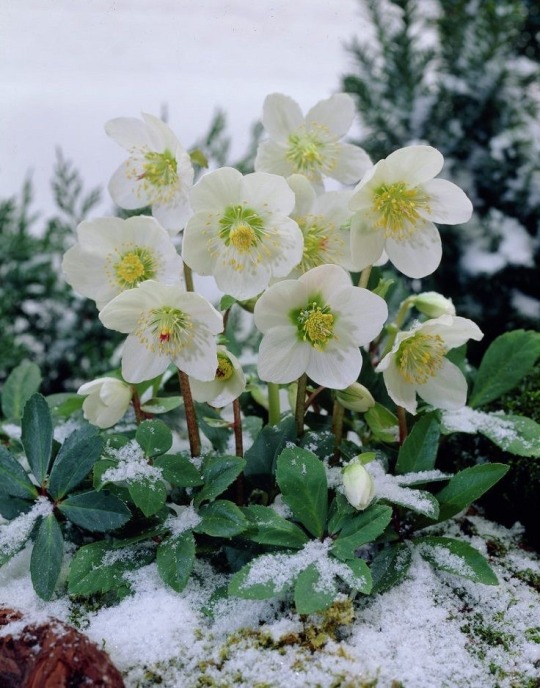
Christmas Botanicals Series: Black Hellebore
Next up in the christmas botanicals series is the christmas rose, also known as black hellebore. Hellebore is a flowering perennial with evergreen leaves in the famously poisonous Ranunculaceae family which also contains aconites (wolfsbane), delphiniums, meadow rues, clematis species, and ranunculus (ranging from wild buttercups to ornamental flowers).
Hellebore contains saponins, cardiac glycosides, and other toxins. While ingestion of hellebore may not be deadly to humans, it is incredibly unpleasant. Symptoms include contact dermatitis, burning skin, burning of the mouth and throat, stomach pain, nausea, vomiting, diarrhea, dizziness, confusion, and irregular heartbeat.
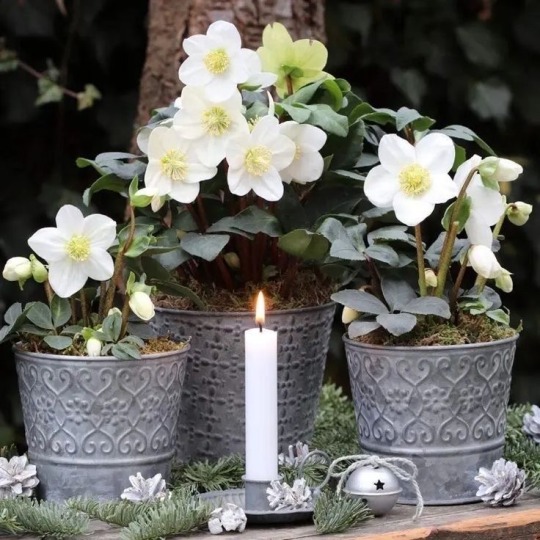
Hellebore was one of the first documented chemical weapons used in warfare. The Greeks used the potently poisonous leaves to taint the entire water supply of the sacred city of Kirrha in 585 BCE to end a 10-year siege. It did not kill the residents but incapacitated them with vomiting and diarrhea while the Greek army invaded and slaughtered the entire population by the sword.
Hellebore has been venerated as a powerful plant by multiple ancient civilizations and was included in medical texts by the likes of Hippocrates and Theophrastus.
Black hellebore eventually became associated with christmas due to its evergreen leaves and naturally blooming in winter near the older date of christmas from the Julian calendar. Like mistletoe, the association is likely older than christianity and it was also brought in the home during the dark of winter to protect from evil spirits, ghosts, witches, and illness, but unlike mistletoe hanging in the roof rafters, hellebore was supposedly strewn on the ground with the rushes. Like hanging mistletoe, people in the British Isles and Europe continued the protective practice after converting to the new religion. Today the practice has changed to decorating with hellebore flowers for christmas.
#bane folk#poisonous plants#poison path#hellebore#black hellebore#helleborus niger#helleborus#christmas botanicals#christmas plants#christmas rose#plant folklore#ethnobotany#magical plants#magical herbs#green witchcraft#green witchery
29 notes
·
View notes
Text

Oriane!
This is one of my ocs from a world that has overgrown due to the flowers, Oriane is in the same universe as my two other ocs Oliander/Oli and Ozro
(i have not posted them here yet but there will be art of them soon)
#art#artwork#digital artist#oc#oc art#artists on tumblr#digital art#plants#elfs#oc artwork#ocs#magical fruit#magical plants
17 notes
·
View notes
Text

ℐ𝓃𝓉𝓇𝑜𝒹𝓊𝒸𝓉𝒾𝑜𝓃 𝒯𝑜 𝒮𝒽𝒶𝒹𝑜𝓌 𝒲𝒾𝓉𝒸𝒽𝒸𝓇𝒶𝒻𝓉 ℬ𝑜𝓉𝒶𝓃𝒾𝒸𝓈 𝒫𝓇𝓉 𝟸
Aɴ Aᴜsᴛʀᴀʟɪᴀɴ Gᴜɪᴅᴇ Tᴏ Usᴇғᴜʟ Hᴇʀʙs﹐ Fʟᴏᴡᴇʀs ﹠ Oᴛʜᴇʀ Bᴏᴛᴀɴɪᴄᴀʟs.
Australian native plants are a rich source of botanical diversity, offering a multitude of herbs, shrubs, and trees that have been utilized for various purposes, from culinary and medicinal to spiritual and ritualistic. In the realm of shadow witchcraft, which is often associated with dark and mysterious practices, many native Australian plants hold a sacred and sometimes even poisonous significance. These plants are revered for their unique properties and the connections they establish between practitioners and the spirit world. Many plants, herbs, flowers and other botanicals Witches use in the Northern Hemisphere are not available in Australia- the following are commonly found throughout Australia and are respectfully used by the custodians of the land, and its sacred Elders.
One of the most iconic and potent Australian native plants associated with shadow witchcraft is the Brugmansia, commonly known as the Angel's Trumpet or Daytura. This plant contains alkaloids that can induce hallucinations and visions when ingested or inhaled. For shadow witches, Brugmansia is often used in ritualistic settings to commune with the spirit world and gain insights into the mysteries of the beyond. However, its poisonous nature makes it a plant to be handled with extreme caution.
Another plant with a deep connection to shadow witchcraft is the Duboisia hopwoodii, commonly referred to as Pitcher Plant. This carnivorous plant produces toxic compounds, including scopolamine and atropine, which can induce hallucinations and delirium when ingested. Shadow witches are known to use this plant to enhance their psychic abilities, gain insight into the hidden realms, and enter altered states of consciousness.
The Tasmanian Devil's Marbles, scientifically known as Euphorbia obesa, are a group of succulent plants native to Australia. Their peculiar appearance has led them to be associated with mysticism in the realm of shadow witchcraft. These plants are believed to contain energy that can be harnessed for protection, divination, and banishing negative influences. Ingesting any part of these plants can be toxic, making them a powerful but perilous tool in the hands of shadow witches.
The Stinking Roger, or Tagetes minuta, is another Australian native plant with a connection to shadow witchcraft. It is known for its pungent odor, which is said to repel evil spirits and negative energies. Shadow witches often use this plant as a protective herb in rituals and spells to create a barrier against malevolent forces. It is not inherently toxic but should be used cautiously due to its strong aroma.
The Sandpaper Fig, or Ficus coronata, is a bushy native Australian plant that has been associated with shadow witchcraft due to its unique texture and appearance. The leaves of this plant have a sandpaper-like texture, symbolizing the concept of "rough magic." Shadow witches may use the Sandpaper Fig in spells and rituals to manifest change, overcome obstacles, and disrupt the status quo. Ingesting the leaves is not recommended, as they may cause digestive discomfort.
The Smokebush, or Conospermum stoechadis, has significance in shadow witchcraft due to its ethereal appearance and the mystical aura it emits. Its unique, cloud-like flower clusters give it an otherworldly quality, making it a plant associated with the veiled realms. Shadow witches may use the Smokebush in spells and rituals to call upon the spirits of the departed or to enhance divinatory abilities. While not inherently toxic, it should be used with respect and care.
The mysterious Black Kangaroo Paw, or Anigozanthos manglesii, is a plant associated with shadow witchcraft due to its striking dark color and its symbolism as a gateway to the hidden realms. Shadow witches may use the Black Kangaroo Paw in rituals to explore the shadow self, work with the energies of transformation, and connect with ancestral spirits. Ingesting any part of this plant is not recommended, as it can be potentially harmful.
The Australian native Sturt's Desert Pea, or Swainsona formosa, holds a sacred place in the practices of shadow witchcraft due to its striking crimson flowers and its connection to the spirit world. This plant is believed to be a bridge between the living and the deceased. Shadow witches may use the Sturt's Desert Pea in rituals to communicate with the souls of the departed and seek guidance from the other side. While the plant itself is not poisonous, it should be used with reverence for its spiritual significance.
The Purple Loosestrife, or Lythrum salicaria, is a plant native to Australian wetlands and is linked to shadow witchcraft due to its vibrant and alluring appearance. Shadow witches may use this plant in love spells and enchantments to manipulate the emotions and desires of others. While not poisonous, it should be used with ethical considerations and an awareness of the potential consequences.
The Sundew, or Drosera spp., is a group of carnivorous plants native to Australia, known for their glistening, sticky tentacles that trap insects. Shadow witches may incorporate the Sundew in their practices to harness the energy of entrapment, binding, and control. While not poisonous to humans, these plants are fascinating symbols of the shadowy aspects of nature.
The Tasmanian Blue Gum, or Eucalyptus globulus, holds significance in the world of shadow witchcraft due to its association with protection and purification. Shadow witches may use its leaves in rituals to banish negative influences and ward off malevolent spirits. While not toxic, the essential oils from this plant should be handled with care and diluted properly.
The Blackwood, or Acacia melanoxylon, is an Australian native tree with dark wood and a deep, mystical significance in shadow witchcraft. Its timber is often associated with transformation, as it is used to craft ritual tools and sacred items. Shadow witches may seek to connect with the spirit of the Blackwood tree to channel its energies for personal growth and empowerment. While not poisonous, the tree's wood should be sustainably harvested to honor its sacred connection.
The Wollemi Pine, or Wollemia nobilis, is a rare and ancient conifer native to Australia that has a profound connection to shadow witchcraft. Its status as a living fossil and its resilience throughout history make it a symbol of hidden knowledge and endurance. Shadow witches may use the Wollemi Pine to gain insight into ancient wisdom and connect with the spirits of the past. Harvesting this tree from the wild is strongly discouraged, as it is a critically endangered species.
The Velvet Bush, or Lasiopetalum schultzei, is a native Australian shrub associated with shadow witchcraft for its velvety, dark foliage. Shadow witches may use this plant in spells and rituals to connect with the energies of mystery and transformation. While not toxic, the Velvet Bush should be used with reverence for its symbolic significance in shadow magic.
The Grey Spider Flower, or Grevillea buxifolia, is a native Australian plant with spidery, otherworldly flowers that have a mystical quality associated with shadow witchcraft. Shadow witches may use this plant in rituals to communicate with spirit guides and to tap into the secrets of the unseen realms. While not poisonous, the Grey Spider Flower should be approached with respect for its spiritual significance.
The Black Kangaroo Paw, or Anigozanthos manglesii, is a unique and striking Australian native plant that holds a special place in shadow witchcraft due to its dark color and symbolic connection to the hidden realms. Shadow witches may use the Black Kangaroo Paw in their rituals to explore the mysteries of the shadow self, facilitate transformation, and communicate with ancestral spirits. While not inherently toxic, this plant should be handled with care and respect for its sacred associations.
The Devil's Twine, or Cassytha glabella, is a parasitic plant native to Australia that has gained notoriety in shadow witchcraft due to its enigmatic growth and ethereal qualities. Shadow witches may incorporate the Devil's Twine in their spells and rituals to enhance their psychic abilities and explore the boundaries between the living and the spirit world. While not poisonous, it should be used with caution, as it is a plant that embodies both mystery and connection.
The Finger Lime, or Citrus australasica, is a small, citrus-bearing tree native to Australia, and its unique fruit is associated with shadow witchcraft for its symbolism of hidden revelations and unexpected knowledge. Shadow witches may use the Finger Lime in rituals to reveal hidden truths and access concealed information. While not toxic, the fruit should be used with intention and respect for its symbolic significance.
The Desert Bloodwood, or Corymbia opaca, is a native Australian tree with dark, gnarled bark and a connection to shadow witchcraft. Its resilience in harsh environments and its deep-rooted nature make it a symbol of inner strength and transformation. Shadow witches may use the Desert Bloodwood in rituals to access their inner power, overcome obstacles, and harness the energy of change. While not toxic, this tree should be approached with a sense of reverence for its symbolic associations.
The Australian Shepherd's Purse, or Capsella bursa-pastoris, is a plant with small, heart-shaped seedpods and is associated with shadow witchcraft for its symbolism of hidden desires and secrets. Shadow witches may use the Shepherd's Purse in spells and rituals to uncover concealed truths and tap into the realm of the subconscious. While not toxic, it should be used with a sense of intention and respect for its symbolic significance.
The Queen of the Night, or Selenicereus grandiflorus, although not native, it can be commonly found. Queen of the Night is a cactus with night-blooming, fragrant flowers that have associations with shadow witchcraft. The mysterious and ephemeral nature of these flowers makes them symbols of hidden desires and forbidden knowledge. Shadow witches may incorporate the Queen of the Night in their practices to access the hidden aspects of themselves and explore the depths of their desires. While not poisonous, the cactus should be handled with care due to its spines.
The Flannel Flower, or Actinotus helianthi, is a native Australian plant with delicate, daisy-like flowers that have connections to shadow witchcraft due to their ethereal beauty. Shadow witches may use the Flannel Flower in spells and rituals to invoke the energies of enchantment, attraction, and the hidden mysteries of nature. While not toxic, this plant should be approached with respect for its symbolic associations.
Eucalyptus, often referred to as gum trees, is an iconic Australian genus, comprising over 700 species. It has a long history of use by Indigenous Australians for medicinal purposes and forms an integral part of their cultural heritage. The leaves of many Eucalyptus species are rich in essential oils, making them valuable in the production of traditional remedies and modern pharmaceuticals. Additionally, the bark and leaves of various Eucalyptus species have been used in indigenous medicine and witchcraft practices.
Kangaroo Paw, or Anigozanthos spp, is a group of plants native to southwestern Australia and is known for its strikingly unique flowers resembling a kangaroo's paw. In Aboriginal culture, the plant holds significance due to its use in traditional medicines and rituals. Its vibrant colors and distinctive shape make it a powerful symbol in shadow witchcraft, often associated with transformation and adaptability.
Banksia, a diverse genus of shrubs and trees, is also deeply rooted in Aboriginal culture, with numerous species being used for food, medicine, and tools. The Banksia serrata, known as Old Man Banksia, is particularly noteworthy for its gnarled appearance and is associated with ancestral spirits in Aboriginal mythology. In shadow witchcraft, its seeds and woody cones are believed to possess protective qualities.
Acacia, commonly known as wattle, is a diverse genus comprising over 1,000 species in Australia. The Golden Wattle (Acacia pycnantha) is the national floral emblem and has cultural significance for Indigenous Australians. Acacia has a long history of use in both traditional medicine and magical practices, with its fragrant blooms often employed in spells related to love, purification, and psychic enhancement.
The Tasmanian Blue Gum, or Eucalyptus globulus, is a species of Eucalyptus tree known for its aromatic leaves and distinctive blue-green foliage. It is often used for spiritual and cleansing rituals in shadow witchcraft, particularly for its association with psychic insight and dream work. In some Indigenous Australian cultures, the Tasmanian Blue Gum holds significance as a source of timber, tools, and medicines.
The Black Wattle, or Acacia mearnsii, is an invasive species originally from Australia but now found in various regions around the world. It has significance in both traditional Aboriginal medicine and shadow witchcraft, where it is often used to enhance one's psychic abilities and intuitive insights.
The Waratah, or Telopea speciosissima, is a striking native shrub with brilliant red flower heads that are a source of great beauty and significance in Australian flora. It has been used in Indigenous culture for its vibrant appearance and in shadow witchcraft for its associations with love, passion, and transformation.
The Xanthorrhoea, commonly known as grass trees, are iconic Australian plants with tall, slender trunks and tufted, grass-like leaves. These plants have various uses in Aboriginal culture, from making tools and weapons to providing food. In shadow witchcraft, the resin produced by Xanthorrhoea is often used for its protective and purifying qualities.
The Snake Vine, or Hibbertia scandens, is a twining climber native to eastern Australia. It gets its name from the twisted and serpentine appearance of its stems. This plant has been associated with various magical and medicinal uses in both Indigenous and witchcraft traditions, often linked to its sinuous form and its connection to the serpent archetype including the Dreamtime Serpent and other Australian ancestral spirits and deities.
The Stinging Nettle, or Urtica incisa, is a native Australian plant known for its stinging hairs that cause discomfort when touched. In some forms of shadow witchcraft, this plant's stinging properties are harnessed for protective spells, curses, or rituals involving pain and transformation.
The Native Violet, or Viola hederacea, is a small, creeping plant with dainty violet flowers. It has cultural importance in some Aboriginal communities and is associated with protection and healing in shadow witchcraft, particularly in matters of emotional well-being.
The Pigface, or Carpobrotus spp, is a succulent plant with colorful, daisy-like flowers that are found in coastal regions. In some Indigenous cultures, the Pigface has culinary and medicinal uses. In shadow witchcraft, it is associated with protection, especially in coastal areas, and is believed to have grounding properties.
The Geraldton Wax, or Chamelaucium uncinatum, is a shrub known for its abundant pink or white flowers. It is used in shadow witchcraft for its qualities of purification and protection, often used in rituals and spells to cleanse spaces and ward off negative energies.
The Bush Tomato, or Solanum centrale, is a small fruit-bearing plant found in arid regions of Australia. It has culinary and medicinal uses in Indigenous cultures and is often associated with fertility, abundance, and nourishment in shadow witchcraft.
The Hakea, a diverse genus of shrubs and small trees, is native to Australia and has significant cultural and ecological importance. In shadow witchcraft, the Hakea is associated with resilience, adaptability, and protection, especially in the face of adversity.
The Poisonous Gimpi Gimpi, or Dendrocnide moroides/excelsa, understood to be a Kabi Kabi- a word meaning 'devil'- is notorious for its intensely painful stinging hairs, making it one of the most feared plants in Australia. In shadow witchcraft, its venomous nature is harnessed for curses and hexes, symbolizing the power to inflict pain and suffering.
The Desert Rose, or Gossypium sturtianum, is a striking, pink-flowering shrub native to arid regions. It is used in shadow witchcraft for its associations with transformation, resilience, and blooming in harsh conditions.
The Sturt's Desert Rose, or Gossypium sturtianum, is a hardy shrub native to arid regions of Australia, known for its striking pink flowers. Shadow witchcraft, is often associated with endurance, survival, and the ability to thrive in challenging environments.
The Balaustion, or Callistemon spp, is a genus of shrubs commonly referred to as bottlebrushes due to their cylindrical, brush-like flowers. It has significance in Indigenous cultures and is used in shadow witchcraft for its symbolism of cleansing, purification, and renewal.
The Blackthorn, or Bursaria spinosa, is a native Australian shrub with sharp, thorny branches and white flowers. It has been used in Indigenous medicine and holds a dark symbolism in shadow witchcraft, often associated with protection, barriers, and defensive magic.
The Fairy Fan Flower, or Scaevola spp, is a delicate, trailing plant with fan-shaped flowers. It is used in shadow witchcraft for its associations with grace, adaptability, and the whimsical world of the fae.
The Kangaroo Apple, or Solanum aviculare, is a native Australian plant with greenish-yellow fruit. It has been used in traditional medicine by Indigenous communities and is associated with transformation, shape-shifting, and altered states of consciousness in shadow witchcraft.
The Weeping Myall, or Acacia pendula, is a distinctive tree with pendulous branches and has significance in Indigenous cultures. In shadow witchcraft, it is associated with emotional release, healing, and purification.
The Yellow Alder, or Turnera ulmifolia, is a small shrub with bright yellow flowers. It has been used in Indigenous medicine and is associated with enhancing intuition and clairvoyance in shadow witchcraft.
The Tea Tree, or Leptospermum spp, is a group of evergreen shrubs and small trees known for their antibacterial and healing properties. In shadow witchcraft, the Tea Tree is often used for cleansing and protection, especially in rituals involving purification and banishing negativity.
The Silver Banksia, or Banksia marginata, is a coastal shrub with silvery leaves and cylindrical flower spikes. It is used in shadow witchcraft for its protective qualities and its ability to ward off negative energies.
The Grasstree, or Xanthorrhoea spp, is a group of slow-growing, tree-like plants with tall flower spikes. It has cultural significance in some Aboriginal communities and is associated with longevity, wisdom, and protection in shadow witchcraft.
The Emu Bush, or Eremophila spp, is a group of shrubs with colorful, tubular flowers. It has been used in Indigenous medicine and is associated with healing, transformation, and psychic abilities in shadow witchcraft.
The Dorrigo Pepper, or Tasmannia stipitata, is a native Australian shrub with small, peppery berries. It has been used in traditional Indigenous cuisine and is often associated with spicy, transformative energies in shadow witchcraft.
The Quandong, or Santalum acuminatum, is a small tree with bright red fruit. It holds culinary significance in Indigenous cultures and is used in shadow witchcraft for its associations with vitality, passion, and protection.
Australia's native herbs and plants encompass a vast and diverse botanical tapestry, with deep roots in both Indigenous culture and the realm of shadow witchcraft. The connections between these plants and their spiritual and magical attributes are rich and complex, reflecting the intricate relationship between the natural world and the human psyche in this unique and ancient land. Whether used for healing, protection, transformation, or other mystical purposes, these native Australian plants continue to play a significant role in the spiritual and cultural fabric of the continent.
Should you have any questions about any native flora in your area and what magical/spiritual qualities they hold- feel free to ask the questions and I will answer to the best of my abilities.
My qualifications are rooted in an in-depth understanding of Australian medicinal plants, their profound medicinal values, and their sacred applications within indigenous practices cherished by the ancestral people of this land. Through years of dedicated research and engagement with indigenous communities, I have acquired a comprehensive knowledge of the unique flora found across Australia and the remarkable healing properties they possess. This knowledge extends beyond mere botanical expertise; it delves into the cultural, spiritual, and traditional significance of these plants in the daily lives and sacred rituals of indigenous peoples.
In addition to my hands-on experience, I have also earned an advanced diploma in herbal medicine, which further deepens my expertise in harnessing the therapeutic potential of native Australian plants. This formal education has enabled me to apply a scientific perspective to the rich traditional wisdom I have gained from indigenous communities, bridging the gap between ancient knowledge and contemporary herbal medicine practices. It equips me with the skills necessary to analyze, extract, and prepare medicinal remedies from these plants, ensuring they are used safely and effectively.
My immersion in the indigenous communities of Australia has been a transformative and invaluable aspect of my journey. By sitting with numerous indigenous families, I have been fortunate enough to witness and participate in their sacred rituals and medicinal practices, thereby enriching my knowledge with first-hand experiences and insights. This unique opportunity has allowed me to not only learn about the medicinal properties of these plants but also understand the spiritual and cultural contexts in which they are utilized. This profound connection to the sacred land and its people has deepened my respect for their traditions and their incredible contributions to the field of herbal medicine, making me well-equipped to honor and preserve this rich heritage.
© Dʏsʜᴀɴᴋᴀ/Oᴅᴇᴛᴛᴇ ₂₀₂₃
#australian witch#native plants#herbology#Magical Properties of Australian Flora & Fauna#Witches of Australia#Magical Plants#Magical World#Shadow Magic#Shadow Witchcraft#Shadow Witchcraft in Australia#Magical Australia#Magical & Medicine Plants of Australia#The Significance of Australian Plants#Witchy herbs#Witches of the World#Shadow Witch#Indigineous Medicine#Witches of Tumblr#witches#A Witches Garden#Our Sacred Earth#The Mother Land#Ancestral Vibes#Respect Our Earth#Articles#Witchcraft Articles#Spiritual Articles#Witchy Wisdom#Medicine of Austraia#Our Plants
7 notes
·
View notes
Text

✨Kinship✨
Mullein follows me everywhere, always finding an excuse to grow outside my bedroom window. All the times I’ve moved in my life, I am honored that she wont let me do it alone.
.
.
.
.
.
.
.
Day 9 of creative prompts by @bloodmilk and @cchelseawwolfe
.
#octoberchrysalis #creativeprompts #mullein #plantmagic #magicalplants
8 notes
·
View notes
Text

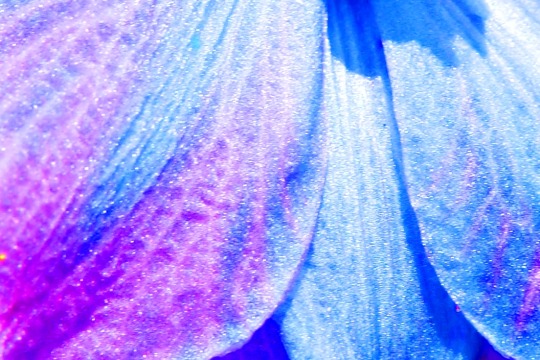
#plant photography#flowers#florals#soft cottagecore#magical#magical plants#blue and purple#purple and blue#my photography
26 notes
·
View notes
Text
Magical Plants of the Core
Vampire hunting is not my only hobby. Despite my black thumb curse, I consider myself to be quite a capable gardener, and you’d be surprised at how often the two overlap!
So, let’s talk plants.
Many Vampires have specific horticultural weaknesses; garlic for the young and the weak, fresh flower petals for those of elven stock, and burning tobacco or pipeweed for Vampiric halflings. But those are all mundane herbs, common enough and with a hundred other uses besides repelling the undead. Magical plants are much, much rarer, and also much more potent in the hands of a hunter.
------
Blood Seeker Garlic is an unusual item, a plant made magical through action and not nature. Ordinary garlic can be cultivated in such a way that it acquires something of the nature of the Vampire itself; water the growing herb regularly enough with Vampire blood, and the resulting bulb gains a taste for the stuff. This can then be thrown or otherwise pressed against bare Vampiric flesh, upon which it actually sprouts rootlike tendrils and tries to burrow into the creature to feast!
This is one of the rare plants on this list that I can actually make use of; I wear gloves as a habit, have little aversion to garlic due to my substantial age, and, obviously, shedding my own blood for a horticultural project is child’s play. Some hunters reject the use of Vampire blood as black magic, but I provide occasional gifts of blood seeker garlic to those of my acquaintance that will accept them; any edge is worth keeping, in our line of work.
------
Nightblight is a species of wolfsbane unique to Kartakass, in an example of the land providing a counter to its ruler’s evil, and though its effects are not limited to Vampires, it is a preeminently useful herb for any hunter - provided you find yourself within its very limited growing range.
Nightblight is, put simply, utterly repellant to anything that even resembles a wolf. To humans and ordinary animals the scent is barely detectible, but any shapechanger with a wolflike form - werewolves, wolfweres, and yes, many Vampires - will refuse to go anywhere near the stuff unless possessed of the most iron of wills. Natural wolves are likewise repelled, and even those transformed into wolves by arcane magic find themselves loathing the smell of the plant. I can speak from personal experience here; even on two legs the scent is vile, and my attempts to collect some for personal use failed utterly.
------
Lilies of Eternal Slumber are native to the jungles of Valachan. These nightblooming flowers are pale on the outside and bright crimson on the inside; upon contact with Vampiric flesh, the petals act as holy water does and burn quite severely. So strong is this effect that a lily can be presented as a holy symbol and used to keep an attacking Vampire at bay, and if a wreath of four blooms is placed around a Vampire’s neck, it mimics the full effect of sunlight - up to and including lethality.
The lily has passive effects as well; any mortal that holds a bloom is more easily able to resist a Vampire’s charm, and anyone already dominated in such a way has a chance to break free upon touching the flower - although they will resist doing so.
The most potent ability of these flowers, however, is that which gave them their name. If but a single bloom is placed on a Vampire’s resting coffin, the Vampire within will be sent into the deepest sleep possible for our kind, short of true death. This effect can only be ended if another creature removes the flower, and a Vampire trapped in such a way risks starvation over the course of many years. I cannot help but wonder if the lily was not an ingredient in the poison that was Strahd’s punishment upon his grandniece, my dearest Lyssa, for her attempt to unseat him as ruler of Barovia.
Unfortunately my efforts to cultivate the plant outside of Valachan were unsuccessful - and, really, even I am not foolish enough to keep a stock of such a plant close to my own home. As a hunter I cannot make effective use of it, and as a Vampire I am as vulnerable as any other to its effects.
#magical plants#lore#ravenloft#dnd#vampires#magical plants of the core#i intended this to be just one post#but then i fell down a hole and now i've got two more in the works
16 notes
·
View notes
Text

A pretty Tiefling inspired by a mood board from a friend 💖🌿
#art#artists on tumblr#artwork#drawing#painting#sketch#cute art#sketchbook#tiefling illustration#tiefling character#tiefling#soft aesthetic#aesthetic#magical plants#plant illustration#plants
2 notes
·
View notes
Text




#harry potter magic awakened#screenshots#magic awakened#hp magic awakened#harry potter#astrid cole#magical plants#hp plants#harry potter plants
4 notes
·
View notes
Text
Vervain~~ a tiny guide <3

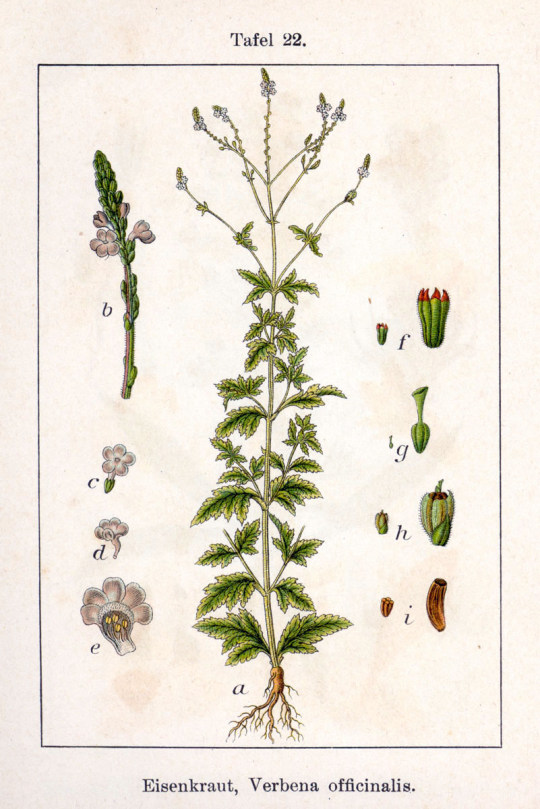
Before making this post I didn't really know much about Vervain, except that it has a dope name. {vervain can be consumed, but please avoid consumption if you have any sort of kidney problems, as vervain can irritate or worsen kidney conditions.}
Folk Names~ common verbena, wild verbena, simpler's joy, holy herb, enchanter's plant, mosquito plant, wild hyssop, Indian hyssop, blue vervain, juno's tears, pigeon's grass, pigeonweed, and herb of the cross
Gender~ Feminine
Planet~ Venus
Element~ Earth
Properties~ Relaxation, love, healing, protection, Anti microbial, Purification.
Because of Vervains protection and purification properties, it can be used to cleans spiritual places and alters. weather as charms or burned as an incense. you can also sprinkle it around your house to protect it from evil spirits {make sure it wont harm your natural wildlife.}
Many roman solders would war vervain in satchels for Protection in battle, so why not follow their lead and do the same.
From what i can tell, the most popular use of Vervain, is as a tea. It can be used for aiding in astral, or divination work. An added bonus of drinking this tea, is that it can aid digestive issues. all the way from toothaches to ulcers! plus with some honey added!!! double antimicrobial tea lol.
Vervain has been used in both witchcraft and anti witchcraft spells. ironic right. It was well loved by the church, as a holy plant, but was also frequently used by pagans as a spiritual healing and protection herb.
Due to its protective nature, a pinch of this with some motherwort would be a great addition to an evil eye warding charm. or just any evil warding charms or spells.
It used to be believed that the undiluted? or unfiltered juice? they believed the juice could grant wishes. This lead to it being used in love spells, success spells, ect.
A good use for vervain is in a purification bath! dribble some vervain oil in your bath with some Epsom salt and relax!
#witchcraft#witch#witchherbs#witch craft#wicca#witch herbs#witch tips#witchblr#witchcore#witch aesthetic#witches of tumblr#witchy#witchy things#pagan witch#paganwitch#magical plants#plants#pagan#plant magic#herb#magic herbs#herbs#spell#spells#spellwork#spell work#spellcraft#charms#evileye#evil eye
12 notes
·
View notes
Text
Hilda's Herborium: Sunflowers

Scientific name: Genus Helianthus comprising of 70+ Species
Native habitat: North and Central America
Magickal qualities:
-Fertility
-Happiness
-Luck
-Loyalty
-strength
Description:
A tall plant with hairy, sturdy stems, usually branching in the wild and single in cultivated variants. Broad, coarse, toothed leaves are sometimes sticky to the touch. The massive flowerhead comprises numerous small five-petaled florets called disk flowers surrounded by larger, sterile, yellow to orange ray flowers, mistakenly considered sunflower petals. Disk flowers mature into edible seeds covered in hard, shiny, grey-black husk. The seeds have an oily, slightly sweet flavor.
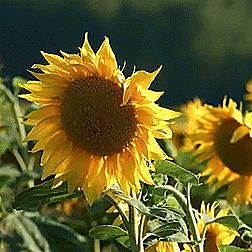
Folklore:
Sunflowers, hailing from Mexico and Peru, were used by the Aztecs in their temples of the Sun. The priestesses wore sunflower crowns and carried the flowers in their hands, and the motif of sunflowers was used for decoration, sometimes inlaid with gold.
There is evidence that sunflowers were being cultivated by Native Americans, in what is now known as Arizona and New Mexico, as early as 3000BC. They were a common crop and are thought to have been domesticated before corn. The plant was known as the ‘fourth sister’ and planted by several Native American groups on the north edges of gardens, next to the other sisters: corn, beans, and squash. As sunflower produces extracts that increase germination of wheat, amaranth, purslane, and many other useful plants, while inhibiting germination of weeds, planting sunflowers in the fields should be considered a brilliant, pro-ecological, and sustainable practice.
Early colonists in North America learned about the many uses of sunflowers from the Native American tribes near them. In addition to being useful as a source of yellow and orange dye for fabric, the sunflower also comes in handy medicinally - it was known for its antimalarial properties. In the 1500s, Spanish explorers took sunflowers back to Europe with them, and the species has spread around the world since then. The flowers were cultivated widely but were mainly ornamental. By 1716, a patent was granted in England for a technique to extract the oil from the seeds. In 17th Century Europe, some rural practitioners of folk magic used an ointment that would help them see the Fae folk. To do this required a blend of several summer, sun-oriented flowers, mixed in with sunflower oil and left in the sun for three days until it thickened.
Russia is credited with spreading the popularity of sunflowers. Texts from 1769 mention that sunflowers had moved from purely ornamental plants to being used to make oil. By the 1830s sunflower oil was being produced on a commercial scale. Part of the rise in popularity of sunflower oil was due to the Russian Orthodox Church. The Church forbid the consumption of most oils during lent, however, sunflower oil wasn’t on this list which meant that it rose immensely in popularity.
In Greek mythology, sunflowers came about because a young girl was madly in love with Apollo and followed his path through the sky every day. He eventually got sick of her constant pining and turned her into a sunflower by piercing her with one of his sun arrows. Other versions of this story suggest that another god felt sorry for her and turned her into a sunflower so as to stop her obsession. The myth suggests that because of this young girl, sunflowers still follow the path of the sun throughout the day facing east in the morning and west in the evening.
In many folkloric traditions, sunflowers are seen as symbols of good luck. Planting them around your home and garden will bring fortune your way. It is also said that if you pick a sunflower at sunset, then wear it on your person, it will bring you good luck the following day.
Sunflowers are often associated with truth, loyalty, and honesty. If you want to know the truth about something, sleep with a sunflower under your pillow - and the next day, before the sun goes down, the truth should be revealed to you. The sunflower is considered a flower of loyalty because day after day, it follows the sun, from east to west. In some folk magic traditions, it is believed that slipping a bit of sunflower oil or seeds into someone’s food or drink will cause them to be loyal to you.
The sunflower is also associated with fertility, thanks to its connection to the sun. To bring about conception, eat sunflower seeds or take a ritual bath with sunflower petals. A necklace or crown of dried sunflower heads can be worn–particularly at Litha, the summer solstice–to bring about fertility.

Quotes about sunflowers:
"A sunflower field is like a sky with a thousand suns." -Corina Abdulahm-Negura
"Who knows what may lie around the next corner? There may be a window somewhere ahead. It may look out on a field of sunflowers." -Joe Hill
"Turn your face to the sun, and shadows follow behind you." -Maori Proverb
"Does she realize she looks like a sunflower, ready to rain sunlight on all who look down upon her?" -Simone Elkeles
“Every friend is to the other a sun, and a sunflower also. He attracts and follows.” -Jean Paul
“And the yellow sunflower by the brook, in autumn beauty stood.” -William Cullen Bryant
“The road to freedom is bordered with sunflowers.” -Martin Firrell
#hilda's herborium#sunflower#witchblr#paganblr#paganism#nature#witchcraft#green witch#herbs#magical plants
11 notes
·
View notes
Photo



Dragon’s Blood
When burning the resin, it is said errant lovers will come back.
Place a stick from this plant under your pillow to cure impotency. Burning the dried resin will drive evil and negativity away.
Carrying the dried resin acts as a powerful protection.
When added to other incenses, it heightens the already existing powers of the other elements in the incense.
To gain peace and quiet, powder some and mix with salt and sugar. Then put in a bottle and secure tightly, tuck away in a corner of the house.
#dragon's blood#plant#magical use#magical herbs#magical plants#protection#impotency#powers#incense#blood#blume#calamus draco#draconis resina#sanguis draconis#dragon's blood palm#masculine#mars#fire#love#exorcism#potency
7 notes
·
View notes
Text
because i have no patience whatsoever…
ladies and gentlefolk i give you,
stanley (from chapter 2 of icotfs!)
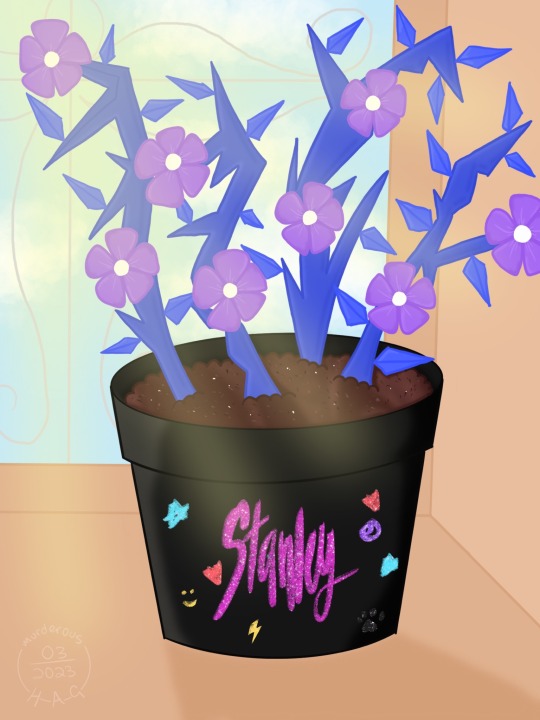
his name is written in pink sparkly marker because i can just SO see sirius writing all that in sparkly markers and having a blast- anyway here stanley is, upon the dorm windowsill!
also why does tumblr hate my art…its always such low quality before you open the image when i upload it
#fic: invisible cracks of the frozen sidewalks#wolfstar#remus lupin#sirius black#padfoot#magical plants#herbology#regulus black#hag's art
4 notes
·
View notes
Text
Viridis Genii Symposium
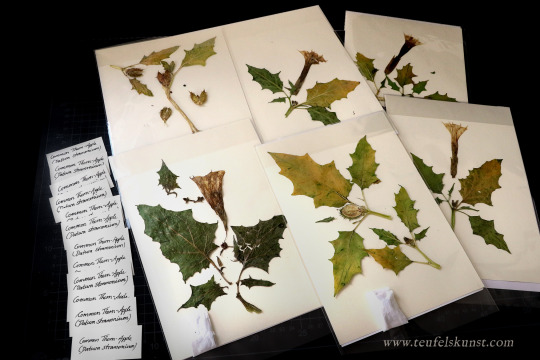
View On WordPress
#plant art#magical plants#events#workshop#viridis genii#viridis genii symposium#online workshop#online lecture#phytography#sympathetic magic
4 notes
·
View notes
Text
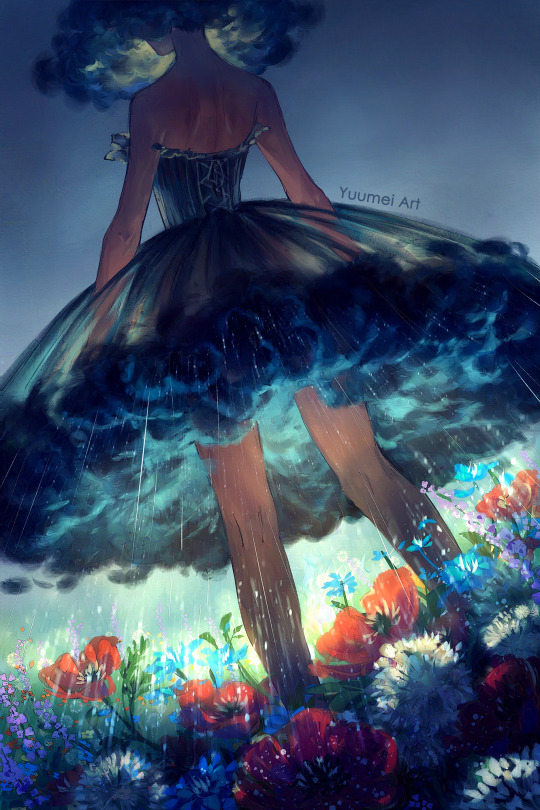
Rain for My Parade 🌧️🌱🌿🌹🌷🌼
part of my cloud petticoat series~
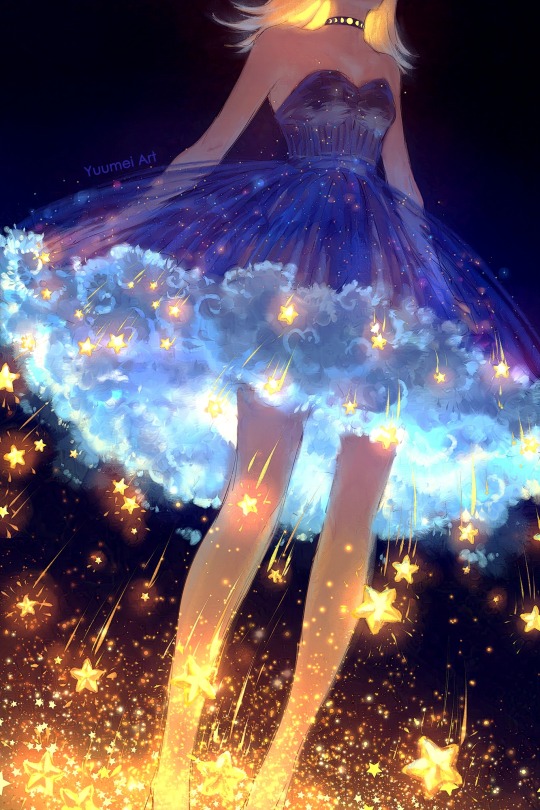
20K notes
·
View notes
Text

Top tip to those playing Hogwarts Legacy, possibly for the first time:
If you’re like me and are around Level 24, about to start the side quest “Absconder Encounter”, it’s definitely possible to defeat the Level 32 Absconder, just by keeping your distance and using only Chinese Chomping Cabbages when the enemy is targeted…no spells or Wiggenweld Potions required. I’d used only 4 Chinese Chomping Cabbages to battle The Absconder, before it was defeated, just like that. Trust me when I say that this was the last thing I expected…talk about quick and painless 😳😱.
#hogwarts legacy#5th playthrough#Absconder Encounter#side quests#Wiggenweld Potions#magical plants#chinese chomping cabbages#mandrakes#venomous tentacula#top tip for HL gamers#knowledge is power
1 note
·
View note